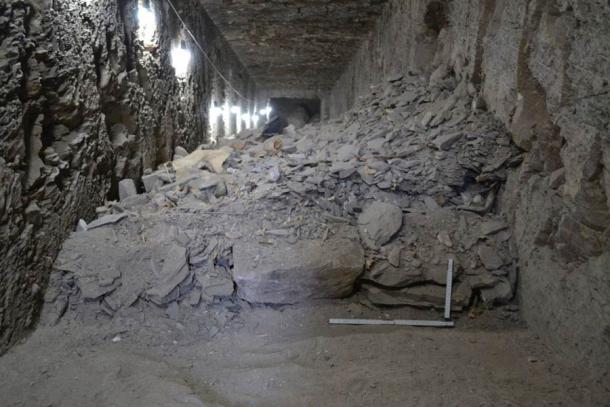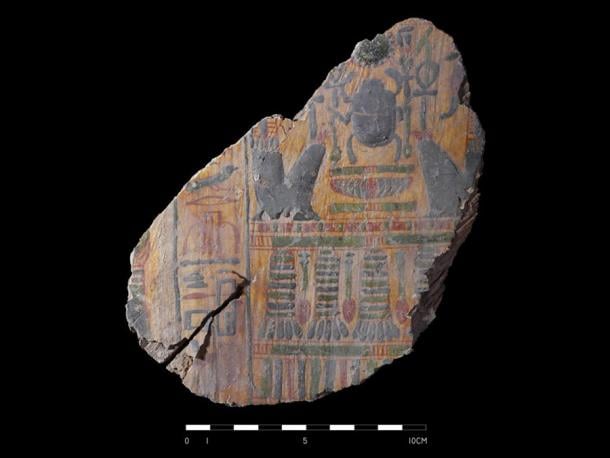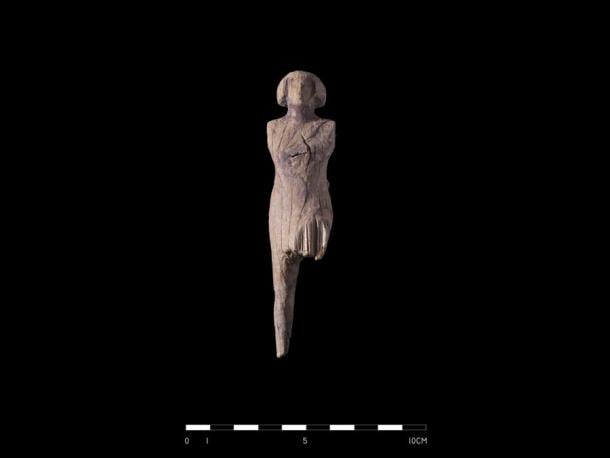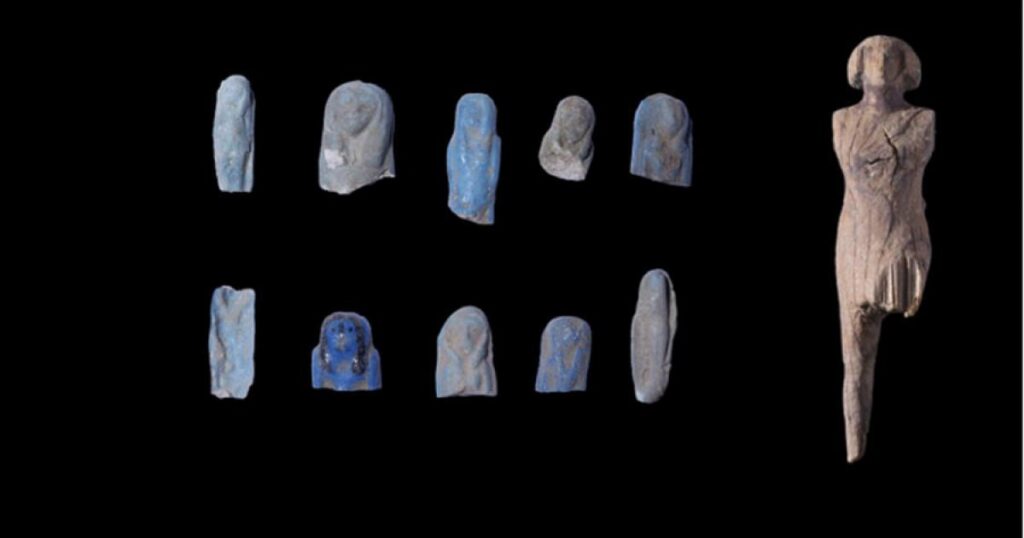Polish archaeologists in Egypt were supporting a tomb ceiling when they realized that beneath their feet lay an unknown treasure trove. They had inadvertently discovered an ancient temple dump and strewn among the shattered ancient objects they excavated hundreds of votive offerings to the mistress of love, the goddess Hathor.
In 1961, the Polish professor Kazimierz Michalowskit led the first of that nation’s archaeological expeditions to preserve the Mortuary Temple of Hatshepsut. Located opposite the modern city of Luxor, on the east bank of the Nile River on the site of ancient Thebes, three massive terraces rise from the desert floor into the cliffs of Deir el-Bahari. This architectural wonder from the ancient world was built during the reign of Pharaoh Hatshepsut of the 18th Dynasty of Egypt, that spanned from 1550/1549 to 1292 BC.
Excavating the Hathor Goddess Chapel: One Man’s Trash, is an Archaeologists Treasure
Now, six decades after Dr. Michalowskit’s 1960s mission, another team of Polish archaeologists were recently reconstructing a ceiling in the Hathor Goddess Chapel when they discovered a 3,500-year-old rubbish dump. From this unexpected treasure trove, the archaeologists excavated many delicately carved female figurines and other offerings to the sky goddess Hathor. Most often depicted as a cow or as a lady with cow ears, Hathor was the spiritual overseer of fertility, women, and emotions.

A report in Archaeonews lists the hundreds of artifacts as comprising: “cups, ceramic flasks with breast designs, painted plates and bowls with plant motifs.” While these symbolic items might not at first appear to be related, every single one can be related to the idea of being reborn from the Land of the Dead, Duat. It is thought that the votive offerings were left at the tomb site by local residents seeking protection from Hathor.
The Son or Wife of Pharaoh Mentuhotep II?
Dr. Patryk Chudzik from the Polish Centre of Mediterranean Archaeology of the University of Warsaw was the lead archaeologist on the recent excavations at the Hatshepsut temple. He told Polish media that his team “were afraid” that their dig might cause the ceiling of the tomb to collapse, and it was when supports were being built that the dump was inspected and cleaned, “as it lay on top of a cemetery.”

Burial goods from the early Middle Kingdom demonstrated that the archaeological layer was about 500 years older than the Temple of Hatshepsut, but the bulk of the discovered items date from the New Kingdom period. A carved wooden man was also discovered, which is thought to represent the person for whom the tomb was built.
Dr. Chudzik said of this man that he was “a person closely related to the pharaoh Mentuhotep II – possibly his son or wife.” And having royal associations offers reason as to why so much looting has occurred in this particular tomb over the centuries.
Getting Rid of the Old at the Temple of Hatshepsut
Currently, the archaeologists have no idea why so many Hathor goddess figurines were put into this one tomb. However, Dr. Patryk Chudzik believes that so many ritual items were placed in the Chapel of Hathor that “the temple administrator had to clean them up, resulting in a pile of rubbish.” In modern terms, this would be like a cemetery manager dumping all of the flowers, teddy bears, and sentimental offerings at a graveyard into a skip, to make way for more.

What is currently a mystery at the site is why so many 18th Dynasty painted pots and bowls were found in the dump, so long after the tomb was originally built. Furthermore, among the discarded piles of artifacts, the researchers identified several stone blocks from the sanctuary of Amun, in the Hatshepsut temple. Knowing the provenance of these stones, Dr. Chudzik said they, and other artifacts, will now be returned to their original place within the temple.

